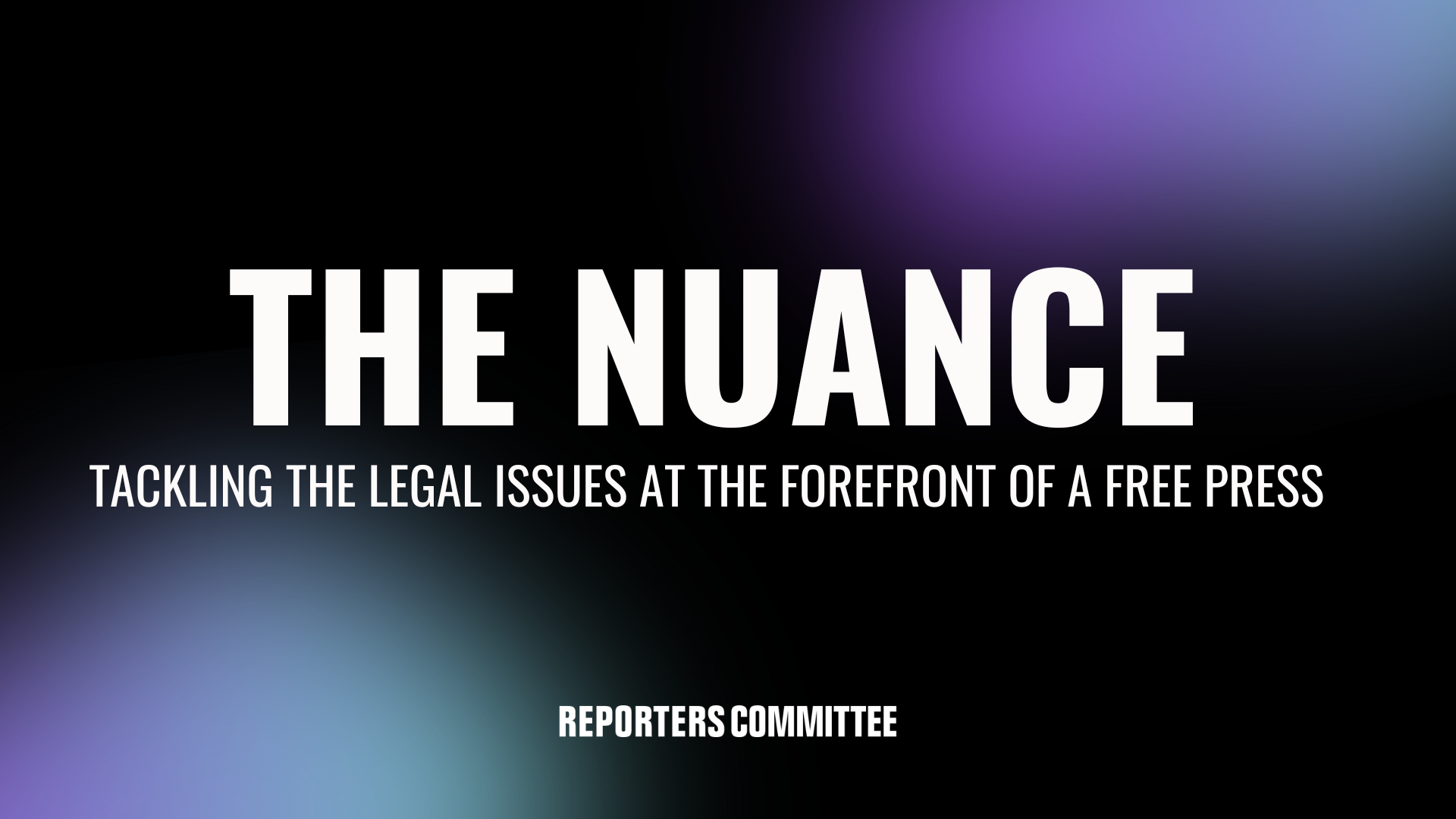What is ‘national defense information’ anyway?

If you like this post, sign up to get The Nuance newsletter delivered straight to your inbox every Sunday night!
One of the more confusing things about the Espionage Act of 1917 — the World War I-era federal law that criminalizes certain disclosures of government secrets — is that it doesn’t refer to what we all think of as signifying a secret: classified information. Rather, with the exception of a 1951 amendment that refers to “classified” communications intelligence, the Espionage Act covers “information related to the national defense,” or “national defense information.”
The scope of NDI has historically been unclear, which is particularly concerning for national security journalists, whose sources could be at greater risk of violating the Espionage Act under a more expansive definition.
The only Supreme Court case on the subject — 1941’s Gorin v. United States, where the Court upheld the convictions of two Soviet spies who challenged the law as unconstitutionally vague — has been of limited help in determining the definitional boundaries of the term. The lead scholarly deep dive on the legislative history of the Espionage Act — the seminal 1973 Columbia Law Review article by Harold Edgar and Benno Schmidt Jr. — found the term to be wide-ranging (which, they argued, was a problem). And the only federal appeals court decision to address the issue basically found that NDI is anything that is closely held and could be potentially harmful to the United States if disclosed.
I recently spoke to a historian at the University of Glasgow, however, who has a different take. Daniel Larsen is a lecturer in intelligence and war studies at the school who published 2021’s “Before ‘National Security’: The Espionage Act of 1917 and the Concept of ‘National Defense’” in the Harvard National Security Journal. His argument is that the definition of NDI — and the one that the Supreme Court in Gorin was in fact applying — is much narrower and was well understood to be so at the time of the law’s drafting. According to Larsen, the popularization of the term “national security” during the Cold War supplanted “national defense” in the minds of the courts and of scholars like Edgar and Schmidt, when the two are far from co-extensive.
National security could sweep in, for instance, information related to foreign affairs or non-military intelligence, which no one at the time of the Espionage Act’s passage would have understood to refer to national defense. (Indeed, America wouldn’t stand up a peacetime, civilian intelligence service until after World War II.) National defense, by contrast, would be limited to military affairs and things with a “meaningful and tangible” connection to military readiness. As a practical illustration of the latter, the concept, according to Larsen, has historically had a significant agricultural component. Armies march on their stomachs, after all.
The ramifications of Larsen’s argument, were it adopted by the courts in some future Espionage Act case, could be profound — in ways that are beyond the scope of this newsletter. The most obvious would be mitigating the inherent vagueness in the term NDI, which has been a line of attack by defendants on its constitutionality. (Vagueness challenges have historically been unsuccessful — most recently in former President Trump’s classified documents case — but they are almost certain to arise in future prosecutions under the law.)
A narrowed definition of NDI could also limit the law’s application in areas where excessive secrecy has led to policy missteps — think blowback from CIA political interventions during the Cold War — and focus it to areas where most people would agree that secrecy has its place, like military affairs.
What it wouldn’t do, however, is address a version of the question that was helpfully identified by now-Director of National Intelligence Avril Haines in a 2021 essay in honor of the 50th anniversary of the Pentagon Papers.
Haines argued that the problem of overclassification is a valid one, and one worth addressing. But she also noted that “solving” the (exceedingly difficult) problem of overclassification and then aggressively pursuing leaks of properly classified information would also be shortsighted. The “more challenging question,” rather, is how to promote “as a matter of course” the disclosure of properly classified information that should nonetheless be declassified “because its importance to the underlying purpose of the free speech guarantee outweighs the national security interest in maintaining secrecy.”
And, while Haines is referring there to grappling internally in government with its natural bias toward secrecy, the corollary of that question is what do we do as a society, constitutionally, with secrets that could legitimately harm national security if disclosed, but where disclosure is nonetheless warranted because the information is essential for a democratic electorate. As an example, Haines identifies some of the disclosures around the Obama-era drone program. In other words, clarifying the definitional boundaries of NDI would undoubtedly be a good thing, but doing so wouldn’t solve the problem of identifying when disclosures of bona fide NDI, especially by the press, are constitutionally protected.
In any event, we commend professor Larsen’s article to anyone interested in these issues. It’s a great read, and one you could see cited if and when national security leak cases are again before the courts.
The Technology and Press Freedom Project at the Reporters Committee for Freedom of the Press uses integrated advocacy — combining the law, policy analysis, and public education — to defend and promote press rights on issues at the intersection of technology and press freedom, such as reporter-source confidentiality protections, electronic surveillance law and policy, and content regulation online and in other media. TPFP is directed by Reporters Committee attorney Gabe Rottman. He works with RCFP Staff Attorney Grayson Clary and Technology and Press Freedom Project Fellow Emily Hockett.